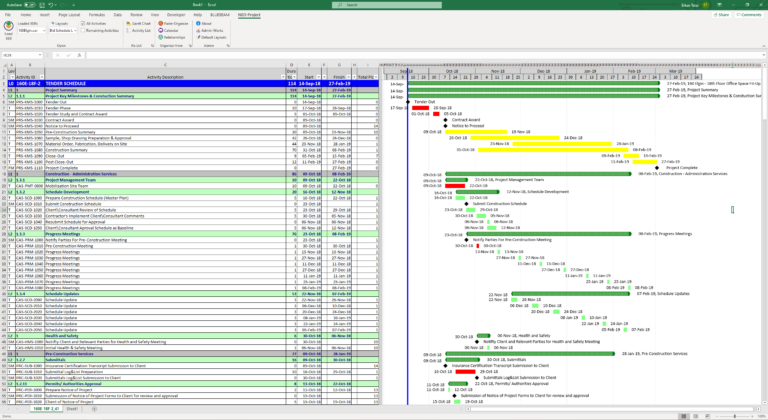Mastering Construction Scheduling: Building Success at Every Stage of Your Project
Introduction
Efficient construction scheduling is the backbone of a successful construction project. It’s the art and science of organizing and managing all the tasks, resources, and timelines involved in turning a blueprint into a thriving structure. In this blog post, we’ll delve into the importance of construction scheduling during the construction stage of a project and explore how it can contribute to a seamless, on-time, and within-budget execution.
The Role of Construction Scheduling
Construction scheduling is not just about creating a to-do list; it’s a strategic approach that ensures all project elements come together harmoniously. Here’s why it’s crucial during the construction phase:
Resource Optimization: Scheduling helps allocate resources efficiently, avoiding over- or underutilization. This ensures that equipment, materials, and labor are available when needed, reducing downtime.
Time Management: A well-thought-out schedule sets clear deadlines for each task, making it easier to monitor progress and identify potential delays early on. Timely completion is often a critical factor in project success.
Budget Control: By streamlining the construction process, scheduling helps control costs. It minimizes unexpected expenses caused by delays, revisions, or resource shortages.
Risk Mitigation: Identifying potential conflicts or bottlenecks in advance allows for proactive problem-solving, reducing the likelihood of costly disruptions.
Best Practices for Effective Construction Scheduling
Now, let’s explore some best practices to ensure your construction scheduling is as effective as possible:
Detailed Work Breakdown Structure (WBS): Start with a comprehensive WBS that breaks down the project into smaller, manageable tasks. This forms the foundation of your schedule.
Sequencing: Determine the logical order of tasks. Some tasks may be dependent on others, and this sequencing is vital for smooth progress.
Critical Path Method (CPM): Identify the critical path, which represents the sequence of tasks that must be completed on time to prevent project delays. Focus extra attention and resources on these tasks.
Realistic Durations: Assign realistic timeframes to each task. Consult with experienced team members to ensure accuracy.
Resource Allocation: Ensure that the right resources are available when needed. This includes equipment, materials, and skilled labor.
Contingency Planning: Always have a contingency plan in case of unexpected delays, such as adverse weather conditions or unforeseen site challenges.
Regular Monitoring and Reporting: Continuously monitor progress against the schedule and report any deviations promptly. This allows for timely adjustments.
Collaboration and Communication: Effective communication among project stakeholders, including contractors, subcontractors, and suppliers, is essential. Regular meetings and status updates keep everyone informed.
Conclusion
Construction scheduling is not a one-time task; it’s a dynamic process that evolves throughout the construction phase. A well-structured and closely monitored schedule is your roadmap to successful project completion.
By investing time and effort into construction scheduling, you can mitigate risks, optimize resource utilization, control costs, and ensure that your construction project proceeds smoothly, meeting both your client’s expectations and industry standards.
Remember, the key to success lies in proactive planning, meticulous execution, and ongoing communication. Embrace these principles, and your construction project will be on its way to achieving milestones with confidence.





